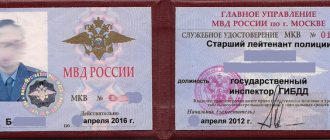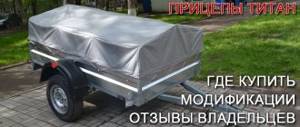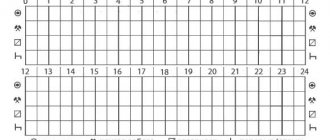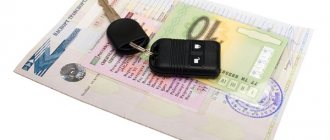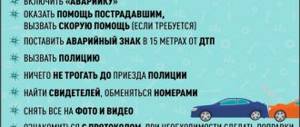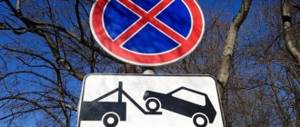Every driver should know the options for developing a situation in which a traffic police inspector has the right to check the presence of a first aid kit and a fire extinguisher in a vehicle, and also issue a fine for their absence in 2021. The further development of the situation and the possible outcome of the dispute with a representative of the law will depend on legal awareness. With a favorable set of circumstances and well-structured defense, you can defend your rights and point out gaps in the traffic police inspector’s knowledge of traffic rules.
Can the traffic police inspector check the presence of a first aid kit and fire extinguisher?
The traffic police inspector has a wide range of rights in relation to drivers, especially if he notices a traffic violation. Regarding the traffic police officer’s demands to show him a first aid kit and a fire extinguisher to check for availability, every motorist must remember that such requests will be illegal in 2021. In clause 2.1.1 of the traffic rules it is clearly established that, at the direction of the traffic police inspector, the driver must present only the MTPL insurance policy and documents for the car, namely: a vehicle registration certificate, a driver’s license. If there is a “disabled person” sign on the vehicle, document your belonging to this category of citizens.
Attention! If you have any questions, you can chat for free with a lawyer at the bottom of the screen or call Moscow; Saint Petersburg; Free call for all of Russia.
A first aid kit and fire extinguisher are not included in the list of documents required by the inspector.
The presence of a first aid kit and a fire extinguisher is checked during the technical inspection of the vehicle. Based on the results of the procedure, a diagnostic card is issued, which indicates the serviceability of the vehicle and the possibility of its further operation. Therefore, the traffic police inspector’s request to present a first aid kit and fire extinguisher in 2021 will simply be illegal. The only way to see the first aid kit in the vehicle is for the inspector to inspect the vehicle.
Providing the traffic police officer with a first aid kit and a fire extinguisher
A question that interests every car owner: does a traffic inspector have the right to stop any car that catches his eye to check for the presence of a fire extinguisher and the contents of the first aid kit? Can he carry out such checks, choosing cars at his own discretion?
Answer: no. According to the instructions, such situations should not be noted. However, the inspection will certainly take place if the driver cannot confirm that the next technical inspection has been passed. And the inspector is prohibited from inspecting a car solely for the purpose of identifying a first aid kit and a fire extinguisher. The basis for an inspection is usually a reasonable suspicion that there are weapons or drugs in the car. Also, a stopped car may resemble one that is reported stolen.
In other words, the inspector manages to detect the absence of the specified items in exceptional situations, by accident. Then a protocol is drawn up and two witnesses are brought in.
Video about where a fire extinguisher and first aid kit should be stored in a car:
What is the fine for not having a first aid kit in 2021?
For the absence of a first aid kit in 2021, Article 12.5 of the Code of Administrative Offenses provides for a fine of 500 rubles. The specified amount is fixed and cannot be greater. When imposing an administrative penalty, the traffic police officer may also exercise the right to warn the driver rather than impose a fine. This measure is not popular among inspectors due to its free nature, and drivers simply do not know that there is a chance to take advantage of this opportunity.
Any first aid kit, even one as limited in its range as the one used in 2021 and consisting mainly of bandages and gauze, has an expiration date. This period can be found on the front of the first aid kit, it is printed with printing ink and averages 4 years from the date of manufacture.
An expired first aid kit is the equivalent of a missing first aid kit.
What is the fine for driving without a fire extinguisher?
If the driver himself admitted to the absence of a fire extinguisher or it was revealed during the inspection process, the fine is provided for in Article 12.5 of the Code of Administrative Offenses and is a fixed amount of 500 rubles
y. But it is immediately indicated that instead of a fine, a traffic police officer can issue a warning without a fine (which drivers forget about, and inspectors, naturally, remain silent about).
The traffic rules indicate that if unforeseen situations arise on the road, for example, it was necessary to put out a fire, then the driver must go to the place of repair or troubleshooting (in the case of a fire extinguisher, to the store to buy a new one). This should be reported to the inspector.
What is the fine for not having a fire extinguisher in 2021?
The mandatory presence of a fire extinguisher in a vehicle is established by the same article 12.5 of the Code of Administrative Offenses as the presence of a first aid kit. Therefore, the fine for not having a fire extinguisher in 2021 will also be 500 rubles. The possibility of imposing a warning instead of a fine also exists.
In order to determine the expiration date for a fire extinguisher, you should pay attention to its type. So, a powder fire extinguisher will last 10 years, but after 5 years it should be recharged. It will be much more profitable to keep a gas fire extinguisher in your car, since its duration is longer. However, it should be checked once a year and recharged every five years.
You should also not forget that if the inspector discovers the absence of a fire extinguisher or an empty cylinder, you can always refer to unforeseen circumstances on the road in which it was urgently necessary to use this fire extinguishing agent. Such situations could be a fire left on the side of the road or smoke under the hood of a passing car. But the employee will still be able to fine him, and everything that is said to justify the driver will only be calculated on the leniency of the inspector.
What kind of first aid kit and fire extinguisher should you have?
Fire extinguisher. The law requires at least one fire extinguisher with a capacity of 2 liters in a car or truck. The certificate must indicate GOST R-51057.
The shelf life of the cylinder is 10 years, and that of the powder mixture is 5 years. This means that the cylinder needs to be recharged every 5 years. This can be done at any store that sells fire fighting equipment. Costs on average 120 rubles.
First aid kit. Since 2009, the composition of the first aid kit has changed - there are no medicines there. Only dressings to stop the bleeding and save the person while the ambulance is on the way: bandages, napkins, plasters of various sizes, a tourniquet, gloves and a mouth-to-mouth resuscitation device.
Read more about the composition of a car first aid kit in 2021.
What must be in a car?
It is mandatory, in accordance with clause 2.1.1 of the Traffic Regulations, that the following documents must be present in the vehicle when using it:
- driver's license;
- OSAGO policy;
- vehicle registration certificate.
These documents are presented upon the first request of a traffic police officer. In addition to documents, in accordance with clause 7.7 of Chapter 7 of the Traffic Regulations, the following items established by law must be in the car:
- fire extinguisher;
- first aid kit;
- warning triangle;
- signal vest.
Fine for first aid kit and fire extinguisher
Any traffic police officer can reasonably explain it, referring to Article 7.7 of the Traffic Regulations of the Russian Federation. What is written in it?
In short, even buses and wheeled tractors must have the above items. As for the warning triangle, it must also fall under GOST R 41.27-2001. If these items are not present, according to the law, it is prohibited to operate the vehicle.
The fine for such a violation, although small, is unpleasant - 500 rubles. Although you can get off with just a warning.
The procedure for imposing a fine for the absence of a first aid kit or fire extinguisher
To impose an administrative fine for the absence of a first aid kit or fire extinguisher, the fact of the offense must be properly recorded. These actions can only be carried out by a traffic police inspector by drawing up a protocol on administrative responsibility.
In a situation where there is no fire extinguisher and first aid kit, two scenarios should be considered:
- Drive independently and voluntarily admitted to not having a first aid kit or fire extinguisher.
- The driver refused to admit that there was no first aid kit and fire extinguisher in his car, and this fact was established through an inspection of the vehicle.
In the first case, the traffic police inspector, with the participation of two witnesses or while recording a video, draws up a protocol on the administrative offense and gives a copy of it to the driver. It should be remembered that in 2021 the protocol is not one hundred percent proof of guilt. It will only serve as the basis for drawing up a resolution on an administrative offense. But the resolution will be the basis for imposing a fine for the lack of a first aid kit and fire extinguisher.
The rules for drawing up the protocol are regulated by Art. 28.1 Code of Administrative Offenses of the Russian Federation. The protocol must necessarily contain the location of the offense, the date it was written, the position and name of the traffic police officer who compiled it, as well as information about the offender and the reasons for the detention.
In the second case, when the driver refuses to present a first aid kit and a fire extinguisher for inspection, the traffic police officer will only have to inspect the vehicle. At the same time, a traffic police officer does not have the right to carry out an inspection just for the sake of checking a first aid kit or fire extinguisher. To suppress such actions, the inspector should be reminded of Article 19.1 of the Code of Administrative Offenses “Arbitrariness”. To carry out an inspection, it is necessary to have strong arguments, for example, the presence of a reference to a similar car about the transportation of weapons, drugs, or about the presence of a similar car that was stolen. In such cases, the driver has the right to demand the presentation of an orientation.
If the search could not be avoided, then it should be remembered that it can only be carried out in the presence of two witnesses or with video recording (Article 27.9 of the Administrative Code). In this case, uninterested persons from among other drivers must be witnesses. Traffic police officers are prohibited from involving their partners or trainees as inspectors as witnesses. If this rule is violated, the legality of the protocol drawn up will be easy to challenge.
The car inspection protocol can be found here.
Fine for lack of a first aid kit, fire extinguisher and warning triangle in 2021
Often on our roads you can find a large number of traffic police officers who try not to miss a single car in order to issue a fine for any, even minor, violation. Today I would like to discuss a situation where you have a first aid kit, a fire extinguisher and a warning triangle in your car, but the inspector does not believe you and demands to see them.
Regardless of where the action takes place, at a stationary post or on a remote country road, your actions should be as follows:
- Initially, the inspector must introduce himself, name his position and state the reason for the stop.
When contacting a road user, the employee must introduce himself, stating his position, rank and surname, present his official identification at the request of the citizen, and then state the reason and purpose of the appeal. In all cases of application of measures that restrict the rights and freedoms of a road user, the employee is obliged to explain to him the reason and basis for the application of such measures, as well as the rights and obligations of the road user arising in connection with this.
paragraph 45 of Order of the Ministry of Internal Affairs of Russia dated August 23, 2017 N 664
After this, he must present his ID. If he did not do this, then remind him of this, since this is his responsibility.
Persons who have the right to stop a vehicle are required to present an official identification card upon the driver’s request.
clause 2.4 of the traffic rules
Persons who have the right to stop a vehicle are required to present an official identification card upon the driver’s request. clause 2.4 as amended Decree of the Government of the Russian Federation of October 31, 1998 N 1272)
Paragraph 3 of clause 2.4 of the traffic rules
- After the ID is shown to you, ask to indicate the clause of the traffic rules that would oblige you to present this content. If the inspector starts pointing out points from the order of the Ministry of Internal Affairs, tell him that they are not of interest to you, since the basic law of the driver is traffic rules. In theory, this should be paragraph 7.7 of Chapter 7 of the List of faults and conditions under which the operation of vehicles is prohibited. This list is an addition to the traffic rules.
Absent: on buses, cars and trucks, wheeled tractors - a first aid kit, fire extinguisher, warning triangle in accordance with GOST R 41.27-2001; (as amended by Resolutions of the Government of the Russian Federation dated December 14, 2005 N 767, dated November 12, 2012 N 1156) on a motorcycle with a side trailer - a first aid kit, a warning triangle in accordance with GOST R 41.27-2001. (as amended by Resolutions of the Government of the Russian Federation dated December 14, 2005 N 767, dated November 12, 2012 N 1156)
Clause 7.7 of Chapter 7 of the List of Faults
- If the inspector could not tell you this item, then remind him that you have a valid Technical Inspection coupon.
- If this does not convince him that you have everything and he urgently asks you to present these items, then tell him that you have everything, but in order for him to be able to personally verify this, let him draws up a vehicle inspection protocol and invites two witnesses.
1. Personal search, examination of things that are on an individual, that is, an examination of things carried out without violating their structural integrity, is carried out if necessary in order to detect instruments of committing or objects of an administrative offense.
2. Personal search and search of things in the possession of an individual are carried out by officials specified in Articles 27.2, 27.3 of this Code.
3. A personal search is carried out by a person of the same sex as the person being searched in the presence of two witnesses of the same sex. Inspection of things carried by an individual (carry-on luggage, luggage, hunting and fishing tools, obtained products and other items) is carried out by authorized officials in the presence of two witnesses or using video recording. (as amended by Federal Laws dated December 3, 2008 N 250-FZ, dated October 14, 2014 N 307-FZ)
4. In exceptional cases, if there are sufficient grounds to believe that an individual has weapons or other items used as weapons, a personal search or search of things on the individual may be carried out without witnesses. (as amended by Federal Law dated December 8, 2003 N 161-FZ)
5. If necessary, photography and filming, and other established methods of recording material evidence, are used. (as amended by Federal Law dated October 14, 2014 N 307-FZ)
6. A protocol is drawn up about a personal search, search of things that are with an individual, or a corresponding entry is made in the protocol on delivery or in the protocol on administrative detention. The protocol on a personal search, examination of things in the possession of an individual, indicates the date and place of its preparation, position, surname and initials of the person who compiled the protocol, information about the individual subjected to personal search, the type, quantity, and other identifying characteristics of things , including the type, brand, model, caliber, series, number, other identification features of the weapon, the type and quantity of ammunition, the type and details of documents found during the inspection and carried by the individual.
7. In the protocol on a personal search, examination of things in the possession of an individual, a record is made of the use of photography and filming, and other established methods of recording material evidence. Materials obtained during a personal search, examination of things in the possession of an individual, using photography and filming, and other established methods of recording material evidence, are attached to the corresponding protocol. (as amended by Federal Law dated October 14, 2014 N 307-FZ)
8. The protocol on a personal search, examination of things in the possession of an individual, is signed by the official who compiled it, the person against whom proceedings are being conducted for an administrative offense, or the owner of the things subjected to search, by attesting witnesses in the case of their participation. If the person against whom the proceedings are being conducted, the owner of the things subjected to inspection, refuses to sign the protocol, a corresponding entry is made in it. A copy of the protocol on the personal search, the search of things in the possession of an individual, is handed over to the owner of the things subjected to search, at his request. (as amended by Federal Laws dated December 8, 2003 N 161-FZ, dated October 14, 2014 N 307-FZ)
Article 27.7 of the Code of Administrative Offenses of the Russian Federation
If the inspector threatens you with drawing up an inspection report, you should ask him what good reason will be given for inspecting the car. The absence of a first aid kit, fire extinguisher and sign in sight is not a good reason. If the traffic police officer nevertheless indicates such a reason in the protocol, then he will be in violation of Article 19.1 of the Code of Administrative Offenses of the Russian Federation.
Arbitrariness, that is, the unauthorized exercise of one’s actual or perceived right, contrary to the procedure established by federal law or another regulatory legal act, without causing significant harm to citizens or legal entities, entails a warning or the imposition of an administrative fine on citizens in the amount of one hundred to three hundred rubles; for officials - from three hundred to five hundred rubles. (as amended by Federal Law dated June 22, 2007 N 116-FZ)
Article 19.1 of the Code of Administrative Offenses of the Russian Federation
Tell the inspector that his actions are illegal and you will appeal them through the prosecutor's office, after which you should send the complaint to the specified place within 10 days.
Chapter 2 of the Traffic Regulations “General Duties of the Driver” does not say anywhere that, at the verbal request of the inspector, the driver is obliged to show a first aid kit, fire extinguisher or warning triangle. The inspector can make such a requirement only in the absence of a completed inspection. Or discover their absence during the vehicle inspection process. There are no other legal ways.
If you decide to honestly admit that you do not have these things in the car, then the fine for not having a first aid kit, fire extinguisher and warning triangle in the car will be 500 rubles.
Driving a vehicle in the presence of malfunctions or conditions under which, in accordance with the Basic Provisions for the admission of vehicles to operation and the duties of officials to ensure road safety, operation of the vehicle is prohibited, with the exception of malfunctions and conditions specified in parts 2 - 7 of this article , (as amended by Federal Laws dated July 22, 2005 N 120-FZ, dated July 10, 2012 N 116-FZ) entails a warning or the imposition of an administrative fine in the amount of five hundred rubles. (as amended by Federal Laws dated June 22, 2007 N 116-FZ, dated July 23, 2013 N 196-FZ)
Part 1 of Article 12.5 of the Code of Administrative Offenses of the Russian Federation:
I would like to pay special attention to the first aid kit. The complete set of a car first aid kit in 2021 consists mainly of bandages and plasters. Medicines are excluded, since due to safety precautions due to the strong heating of the cabin (in summer it can reach up to 50 degrees), the tablets release hazardous substances and are also subject to spoilage.
If you know that you have a serious illness that requires emergency care, for example, asthma, then you can supplement your first aid kit with the necessary medications.
Of course, there are particularly arrogant traffic police officers who want to get caught up in something just to issue a fine. If you come across just such an inspector, then get ready for the fact that he may demand to check the contents of the first aid kit. If you are missing a couple of bandages or plasters, there is no need to make excuses and promise to replenish them. Calmly explain that just a couple of tens of kilometers ago the cyclist fell, and you provided him with first aid. They have no right to issue a fine for this. If you do not have a fire extinguisher, then you should inform the inspector that you lit a fire that was forgotten by someone on the side of the road. As for the emergency sign, you kindly gave it to the driver of the broken down car. In any case, at the moment you are heading to the repair site to eliminate these faults, taking all precautions.
If other malfunctions occur along the way, for which the operation of vehicles is prohibited by the appendix to the Basic Provisions, the driver must eliminate them, and if this is not possible, then he can proceed to the place of parking or repair in compliance with the necessary precautions;
Paragraph 3 of clause 2.3.1 of traffic rules
If an inspector waves in front of you a supplement to the traffic rules with the title: “List of malfunctions and conditions under which operation of the vehicle is prohibited” and emphasizes the word “operation is prohibited,” do not take this title literally. The inspector just really wants to scare you more. All possible cases of prohibition of operation are given in detail either in Chapter 13.1 of this book “Grounds for prohibiting the operation of a car”, or in Part 1 of Article 27.13 of the Code of Administrative Offenses of the Russian Federation.
In order to suppress violations of the rules of operation, use of a vehicle and driving a vehicle of the corresponding type, provided for in parts 2 and 3 of Article 11.8, part 1 of Article 11.8.1, articles 11.9, 11.26, 11.29, part 1 of Article 12.3, part 2 of Article 12.5, parts 1 and 2 of Article 12.7, parts 1 and 3 of Article 12.8, parts 4 and 5 of Article 12.16 (regarding non-compliance with the requirements prescribed by road signs prohibiting stopping or parking of vehicles, when used with an additional information sign (plate) indicating that in the coverage area of these road signs, a vehicle is detained), parts 2 - 4 and 6 of Article 12.19, parts 1 - 6 of Article 12.21.1, part 1 of Article 12.21.2, Article 12.26, part 3 of Article 12.27, part 2 of Article 14.38 of this Code, the detention of a vehicle is applied, that is, the exclusion of a vehicle from the process of transporting people and goods by moving it with the help of another vehicle and placing it in the nearest specially designated guarded place (specialized parking lot), and storage in a specialized parking lot until the cause of the detention is eliminated, and in case of violations provided for in Articles 11.26 and 11.29 of this Code, also until payment of an administrative fine if the vehicle in which the violation was committed leaves the territory of the Russian Federation. If, due to the technical characteristics of the vehicle, it is impossible to move it and place it in a specialized parking lot in the event of an administrative offense provided for in Part 1, 2, 3, 4, 5 or 6 of Article 12.21.1 or Part 1 of Article 12.21.2 of this Code, the detention is carried out by stopping movement using blocking devices. In case of committing an administrative offense provided for in Article 12.9, parts 6 and 7 of Article 12.16 and Article 12.21.3 of this Code, in relation to vehicles belonging to foreign carriers, owners (possessors) of vehicles, detaining the vehicle by stopping movement using blocking devices applies until an administrative fine is paid. If the vehicle in respect of which the decision to detain is made will create obstacles for the movement of other vehicles or pedestrians, before the detainment begins, it can be moved by driving the vehicle by its driver or by the persons specified in part 3 of this article, in the nearest place where the vehicle will not create such obstacles. In the event of the commission of administrative offenses provided for in Articles 11.26, 11.29, 12.9, parts 6 and 7 of Article 12.16, Article 12.21.3 of this Code, the detention of a vehicle may be carried out by moving it by the driver of the detained vehicle or by the persons specified in Part 3 of this article, and placement in the nearest specially designated guarded place (specialized parking lot), as well as by stopping traffic using blocking devices.
Part 1 of Article 27.13 of the Code of Administrative Offenses of the Russian Federation
There are no other options. These conditions and malfunctions fall within the scope of Part 1 of Article 12.5 of the Code of Administrative Offenses of the Russian Federation. The punishment provided for in Part 1 of Article 12.5 of the Code of Administrative Offenses of the Russian Federation is a warning or a fine of 500 rubles. Suggest that the inspector give you a warning. If he drew up a protocol, then we write: “I don’t agree with the violation, the first aid kit is missing for a reason, I’m moving to the repair site using all precautions, in accordance with Traffic Regulations 2.3.1. I need the help of a lawyer." Ignore the inspector’s words that he will now process everything separately and the cost will be 1,500 rubles. According to Part 1 of Article 50 of the Constitution of the Russian Federation, no one can be punished again for the same violation unless it was committed at different times.
No one can be convicted twice for the same crime.
Part 1 of Article 50 of the Constitution of the Russian Federation
What should a driver do if a fine is imposed for not having a first aid kit or fire extinguisher?
To ensure that you avoid a fine for not having a first aid kit or fire extinguisher in 2021, you should purchase the necessary items and forget about problems with inspection. However, if punishment is inevitable, one should remember the possibility of persuading the inspector for softer sanctions - a warning. You can take advantage of a similar case if you convince a traffic police officer that the missing parts of bandages or plasters were just used to help a boy cyclist who fell in front of your eyes and broke his knees. But if you find an expired first aid kit, you can tell the inspector that you are currently heading for the first aid kit.
Having passed the technical inspection will guarantee protection from additional checks for the lack of a first aid kit and fire extinguisher. It should also be remembered that a request for the provision of the above items is legal only during the period of technical inspection, and its conduct by a traffic police inspector on the road is illegal.
Fine for not having a fire extinguisher
If the inspector discovers the absence of such a mandatory element of the car as a fire extinguisher, he can fine the driver who was driving the car without the corresponding mandatory element of traffic safety.
According to Article 12.5 of the Administrative Code, the penalty for not having a fire extinguisher in a car is 500 rubles. This is the amount the Code estimates such an administrative violation to be. In addition, a fine may be replaced by a warning, at the discretion of the police officer.
Many drivers use a trick and, in the absence of a fire extinguisher, tell the inspector that a situation just arose on the road that led to the use of a fire extinguisher and now they are looking to buy a new one.
An expired fire extinguisher is also a reason for the inspector to fine the driver of the vehicle. The amount of the fine is the same. Elimination of the violation - purchasing a new or refilling an existing fire extinguisher.
In the case of a fire extinguisher, the driver who starts driving his vehicle must understand that the issue is not the amount of the fine, which is quite insignificant, but his own safety and the safety of other road users.
Fine for lack of a fire extinguisher and a first aid kit by the traffic police. Unsuccessful scam for a first aid kit and a fire extinguisher.
Appealing a fine for lack of a first aid kit and fire extinguisher
An appeal against a fine for the absence of a first aid kit or fire extinguisher is possible only if violations are detected in the inspection procedure or in drawing up a protocol on an administrative violation. It is possible to appeal illegal actions of a traffic police officer within 10 days from the date of drawing up the protocol on the offense, as established by Art. 30.1. Code of Administrative Offenses of the Russian Federation. To appeal a protocol on an administrative offense, you must follow the following instructions:
- Include your claims in the administrative violation protocol and be sure to make a note of disagreement with its preparation.
- Receive a copy of the protocol on the administrative violation.
- Write an application to appeal the employee’s actions to his superior management (the head of the territorial traffic police department on whose behalf the employee acts).
- Deliver the specified application to the territorial traffic police office in any convenient way (in person, by e-mail, by registered letter with notification).
- Request confirmation that the traffic police department has received an application to appeal the actions of the traffic police inspector in imposing a fine for the lack of a first aid kit or fire extinguisher. When sent by registered mail with notification, such confirmation will be considered the signature of the employee who received the letter.
- Wait for the traffic police's decision on your application.
If the traffic police response is unsatisfactory, you can also go to court to protect your rights. The possibility of appealing to this authority is also enshrined in Art. 30.1. Code of Administrative Offenses of the Russian Federation. In this case, the first two points will be the same as when appealing to the traffic police. Next you should do the following:
- Write an application to the court, which, by territoriality, is located in the same administrative area where the offense occurred.
- Wait for the hearing to be scheduled.
- Receive a summons.
- Appear in court with evidence of your innocence.
Applications to appeal a fine for lack of a first aid kit and fire extinguisher can be found here.
Can a traffic police inspector demand to see a first aid kit and fire extinguisher?
Yes maybe. The inspector is obliged to ensure safety on the road through his actions. If the car does not have a first aid kit or fire extinguisher, this is a violation of traffic rules.
Verification process. The inspector has the right to inspect the car to identify violations of the rules. He may ask you to open the trunk and show the necessary items.
How is a violation recorded? There are no automatic ways to check a first aid kit and a fire extinguisher yet, so a state traffic inspector stands on the road and randomly stops cars. If after the inspection he discovers that there is no first aid kit or fire extinguisher, there will be a protocol, a violation order and a fine.
Alexander Torvard, car lawyer In practice, inspectors rarely stop a car just to check the first aid kit and fire extinguisher. This equipment is often checked during technical inspection. If everything is in place and there are no complaints about the technical condition of the car, they will issue a diagnostic card. Without it, you cannot buy an MTPL policy.
How to avoid a fine for not having a first aid kit?
In order to avoid a fine for not having a first aid kit, you should not immediately admit to the employee that you do not have one. If the inspector comes across as persistent enough, then it is worth showing character and reminding that the driver knows his rights:
- Ask the inspector to present the ID and record its data in any convenient way. In such situations, video recording of the conversation with the inspector will be a good help.
- Demand that the grounds for conducting an inspection of the vehicle be disclosed. When the inspector refers to the orientations, demand that the orientation materials be provided for study.
- If the inspector continues to insist on inspecting the car, ensure the presence of two independent witnesses.
- Additionally, remind the inspector of the responsibility under Article 19.1 of the Code of Administrative Offenses “Arbitrariness”.
Such instructions will help those who feel that the inspector is acting on principle when receiving resistance to a request to show a first aid kit or fire extinguisher.
How to avoid a fine?
In fact, to avoid a fine, it is enough to simply not say that there is no first aid kit in the car. The fact is that traffic regulations oblige the driver to have it in the car, but there is not a single law that would oblige the driver to show it to traffic inspectors on the road. That is, a traffic police officer who stopped a driver cannot simply demand to show him a car first aid kit, much less its contents.
If for some reason the driver independently mentions that he does not have a first aid kit or that it does not contain any mandatory component, then the inspector has the right to impose a punishment under Art. 12.5. In this case, it is better for the driver not to enter into conflict with the police officer, but to admit his guilt and promise that he will buy a new first aid kit at the nearest gas station. Thanks to this, the likelihood that the inspector will decide to release the driver without drawing up a protocol at all or at least without imposing a fine increases greatly (Article 12.5 provides for punishment and a warning).
Nuances
When imposing an administrative fine for the absence of a first aid kit or fire extinguisher, you must remember that such an action is permissible only if several nuances are observed:
- The legality of the action taken (compliance with all requirements of the Code of Administrative Offenses of the Russian Federation).
- The timeliness of such impact (the need to implement punishment immediately after its detection is taken into account).
- Addition of penalties that can be imposed for a combination of offenses (in this case, for the lack of a first aid kit and fire extinguisher, only one fine of 500 rubles is imposed).
Knowledge of legal norms and legislation of the Russian Federation when driving a vehicle will significantly save drivers’ nerves, time and money. Legally competent drivers cause great inconvenience to traffic police officers and discourage them from getting involved again without good reason. Legislation in the field of traffic rules should not be regarded only as limiting the freedom of action of motorists. It is also necessary to take into account its benefits when defending one’s rights before government authorities.
Remembering legal literacy, you should not forget about the safety of yourself and your loved ones who are in a driven car. The cost of a first aid kit and a fire extinguisher is so small compared to the problems that can be solved by having them in the car that the choice made in favor of purchasing these products will more than pay for itself during their operation.
Responsibility for the absence of a first aid kit and fire extinguisher in the car
ConsultantPlus has many ready-made solutions, including the large-scale material “Transportation and Motor Transport”, which will help you understand many issues, including those related to first aid kits in cars. If you don't have access to the system yet, you can sign up for a free trial online! You can also get the current K+ price list.
Most drivers do not mind presenting these items to traffic police, even knowing that they cannot be demanded without reason. However, sometimes it’s really easier to do just that than to waste your nerves and time.
The absence of a first aid kit and a fire extinguisher is recognized as an offense under Part 1 of Art. 12.5 Code of Administrative Offenses of the Russian Federation. The maximum penalty that can be imposed for this is a warning or a fine of 500 rubles (at the discretion of the traffic police inspector). But if this is not the first time the driver has been “caught” for this violation, then a fine will definitely be issued.
The deadline for paying the fine is 60 days from the date of the decision on its imposition (Part 1 of Article 32.2 of the Code of Administrative Offenses of the Russian Federation). By the way, the driver can take advantage of a 50 percent discount on the fine for this offense if he pays it within 20 days from the date of receiving a copy of the fine.
Although it is prohibited to use a car in the absence of these items, the traffic police inspector does not have the right to:
- Remove the driver from driving the vehicle. Suspension is possible in the only case - if there are signs of intoxication of the driver (Article 27.12 of the Code of Administrative Offenses of the Russian Federation).
- Detain the car and send it to the impound lot using a tow truck, since this violation is not included in the list of grounds for detention (Article 27.13 of the Code of Administrative Offenses of the Russian Federation).
